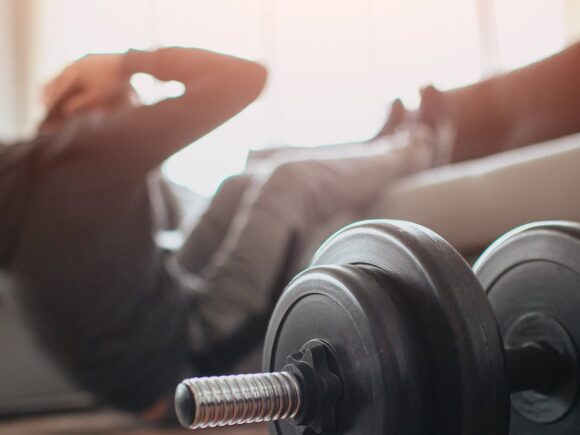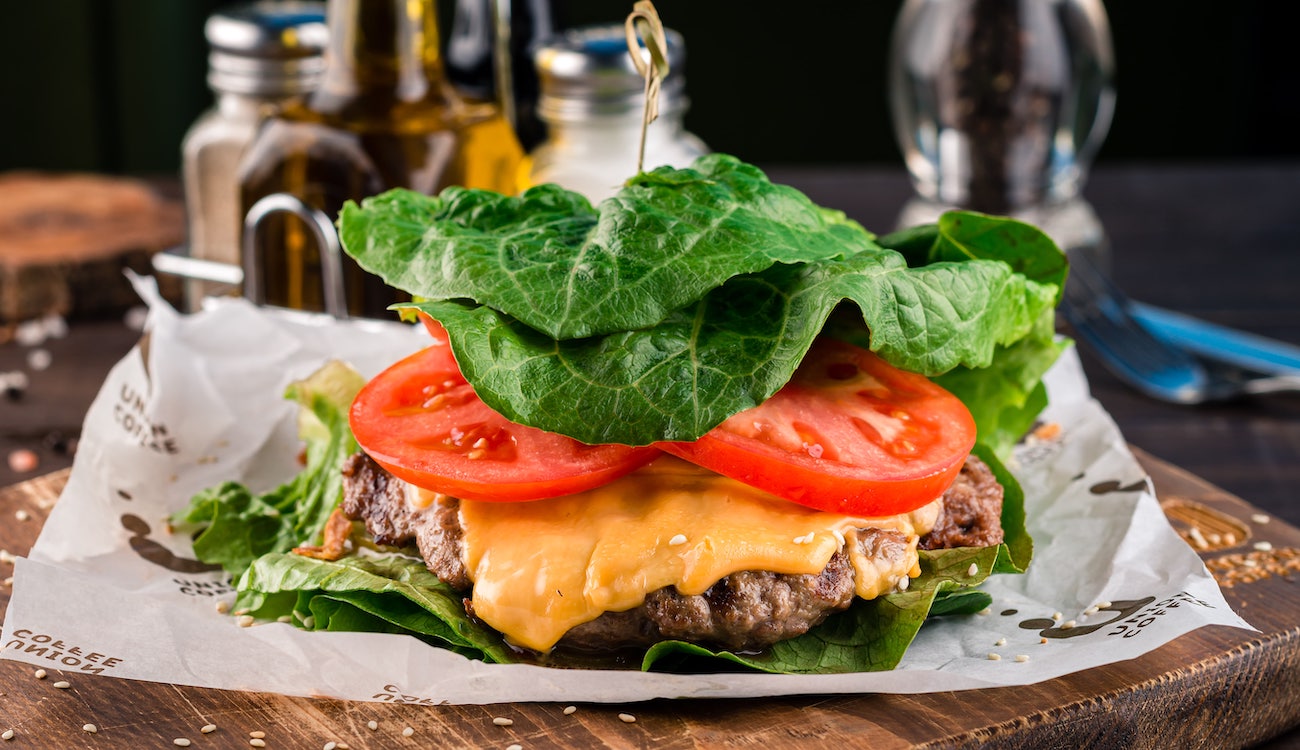The Benefits of Working Out on Keto: From Increased Endurance to Faster Recovery


Are you a fitness enthusiast who has recently started following the keto diet? The ketogenic diet is a low-carb, high-fat diet that has been gaining popularity for its overall health and weight loss benefits.
Exercise on keto can be challenging due to the low-carb nature of the diet. As a result, it leads one to experience decreased energy levels and athletic performance.
If you’re experiencing challenges when working out on keto, don’t worry! You can optimize your workouts while staying in ketosis with the right approach.
These are the main points we will cover in this article:
- Can you work out on keto?
- The health benefits of working out on keto
- Does exercise speed up weight loss in ketosis?
- 5 tips for exercising on keto
- Modified keto for peak physical performance
- Best exercises to do on the ketogenic diet
- How to eat while exercising on the keto diet?
Can You Work Out on Keto?
Yes, you can and should work out on the ketogenic diet. If you’re aiming to lose weight, adding regular exercise to your routine can speed up the process and generally make you feel better. Working out on keto requires proper adaptation, nutrition, and an understanding of the processes your body goes through.
That being said, not all types of exercise are suitable for keto. While research has shown that ketogenic diets can improve endurance performance in trained athletes, it might not be the best fit for high-intensity exercise.
Choosing the right type of exercise to support your keto goals is essential.
- Aerobic exercise. Aerobic exercise is also known as cardio exercise. It involves sustained, long-duration, low-intensity physical activity that can help burn more fat, improve cardiovascular health, and increase endurance. Aerobic exercises include running, cycling, swimming, and brisk walking. These types of activities can be extremely beneficial for individuals in ketosis.
- Anaerobic exercise. It involves short bursts of high-intensity physical activity that can help build strength and muscle mass. Examples of anaerobic exercises include lifting weights, sprinting, and high-intensity interval training (HIIT).
- Flexibility exercise. These are exercises designed to improve mobility and range of motion. Examples of flexibility exercises include yoga, Pilates, and stretching.
- Stability exercise. It focuses on improving balance, coordination, and core strength, which can help reduce the risk of injury and improve posture. Examples of stability exercises include planks, balance exercises, and resistance band training.
The Health Benefits of Working Out on Keto
While some may worry about the effects of this diet on exercise performance, research suggests that working out on keto can have several benefits. Here are the perks of the keto diet and working out combined:
Keto supports fat loss
The keto diet puts your body into ketosis, which means it burns fat for fuel instead of carbohydrates.
In a 2017 study, it was found that the adaptation to the ketogenic diet has been shown to increase rates of whole-body fat oxidation during exercise in race walkers. This means the body can better use stored fat as fuel during physical activity.
In 2018, another research study discovered that overweight individuals who replaced carbohydrates with fat in their diet for a span of 5 months could burn an additional 250 calories per day compared to those who consumed a low-fat and high-carb diet.
Keto can increase energy levels
It is a fact that people may experience low energy levels at the beginning of the keto diet. However, once your body adapts to using fat for fuel, you will soon experience increased energy levels during exercise.

After all, ketones produced during ketosis provide the brain a more stable and efficient energy source to improve mental clarity and focus during workouts.
Keto can improve endurance
While the ketogenic diet may not be the best choice for high-intensity exercises, there is evidence that it can improve performance for endurance athletes. Researchers noted that endurance levels can increase as the body becomes more efficient at fat burning for energy when one does cardio on keto.
In a 2017 study, 20 endurance athletes experienced enhanced performance, body composition, and fat burning during exercise after following the ketogenic diet for 12 weeks.
Keto can speed up muscle recovery
The anti-inflammatory effects of the keto diet may also help with recovery after exercise, reducing muscle soreness and speeding up the healing process.
In a study, researchers investigated whether the ketogenic diet could improve post-exercise recovery in endurance athletes. They measured blood biomarkers, muscle and liver oxidative state, and fatigue recovery 24 hours after exercise. The researchers found that the diet improved several markers of exercise-induced injury. Hence, the results suggest that the ketogenic diet may prevent fatigue and promote recovery in endurance athletes.
Researchers in New Zealand conducted a 10-week intervention on endurance athletes’ body composition, performance outcomes, and experiences. The results revealed that they have experienced increased fat utilization, reduced fat and body weight, improved recovery, healthier skin conditions, and decreased inflammation.
Keto can reduce hunger
Ketogenic diets have been known to be effective in suppressing hunger and appetite, even during weight, which is often a significant challenge when attempting to lose weight. One way that this is achieved is through a decrease in the secretion of the hormone ghrelin, which is responsible for stimulating hunger.
Furthermore, keto can help reduce hunger due to the following factors:
- High protein intake. The keto diet is typically high in protein, which can help to reduce hunger and promote satiety.
- Increased fat intake. The keto diet is also high in healthy fats, which can help to keep you feeling full for longer periods of time.
Does Exercise Speed Up Weight Loss in Ketosis?
Yes, exercise can speed up weight loss on keto. How?
When you restrict carbohydrates, your body enters ketosis, which burns fat for fuel instead of burning glucose. Note that during exercise, your body needs more energy. When the body realizes that it doesn’t have enough glucose, it will turn to fat stores for fuel. This means that exercise can help you burn more fat while in ketosis, leading to faster weight loss.
However, it’s important to note that the body may take some time to adapt to exercising in a state of ketosis, and it’s essential to stay hydrated and maintain electrolyte balance during exercise.
5 Tips for Exercising on Keto
Exercising on the ketogenic diet can provide a range of benefits, but it’s critical to keep some essential tips in mind to optimize your workouts.
#1 Take it easy and start slow
When starting keto, you may experience symptoms like the keto flu. This is a state you may encounter within 2–7 days of starting the ketogenic diet.
These symptoms can include headaches, mental fogginess, fatigue, irritability, nausea, sleeping difficulties, and constipation. Being in this state can put you in a bad condition to work out.
Reports claim that these symptoms will eventually decrease in frequency and intensity between the 3rd and 30th day of starting the diet.
Remember: It is essential to listen to your body and start slowly to give it time to adjust.
#2 Perform high-intensity exercise with caution
High-intensity exercise or anaerobic exercise requires a quick burst of energy primarily fueled by carbohydrates. When your body is in ketosis (as it should be on keto), it uses stored fat for energy instead of carbohydrates. Fat is less efficient as a fuel source than carbs, which can lead to decreased performance and less efficient workouts. That’s because, without a sufficient fuel source, the body may not be able to perform at the required intensity.
If you’re wondering if it’s still possible to perform HIIT workouts on keto, the answer is yes, but it’ll require more deliberate preparation.
In some cases, people practice modified keto to maintain their performance. It means consuming some amount of carbohydrates before exercise, such as a small amount of fruit or a sports drink. This way, it can provide the body with the energy it needs to perform at its best.
#3 Opt for low-intensity training or aerobic exercise
Low-intensity training is considered the best option if you’re following the ketogenic diet. This is because, during low-intensity aerobic exercise, the body primarily uses fat as its primary energy source. Being in a state of ketosis makes the body fat-adapted, which can result in additional weight loss advantages.
#4 Manage your expectation of muscle mass-building
Working out has different goals for everyone, and some of them are easier to accomplish when following the ketogenic diet. If you are looking to lose some fat and maintain your muscle mass – you’re on track. The ketogenic diet has proved to be an effective way to maintain muscle mass. However, it may not be the best option for maximizing muscle growth. This is because muscle growth requires a combination of sufficient caloric intake, adequate protein consumption, and physical activity. All of these factors may be more challenging to achieve on the keto diet.
Muscle gain is usually achieved with resistance training, the type of exercise during which your body uses carbs as a primary fuel source. That is why, if you want to do weight lifting on keto to help build more muscle mass, you will most likely need a modified keto approach to support this goal.
#5 Make sure you don’t undereat before working out
Your body needs energy for working out – it’s as simple as that. If you undereat and work out on the ketogenic diet, you might feel tired, dizzy, and weak.

Furthermore, if you undereat while doing a keto workout, you risk putting your body into starvation mode, which can lead to loss of muscle mass.
Fueling your body adequately is essential to get the most out of your workouts. Consider incorporating a keto-friendly pre-workout snack to give your body the fuel it needs for successful training.
Some good pre-workout snack options on keto include a small serving of nuts, a protein shake, or a hard-boiled egg. Pay attention to portion sizes and avoid overeating, as consuming too many calories can interfere with weight loss goals on keto.
Modified Keto for Peak Physical Performance
High-intensity workouts require glycogen from carbs, which can be a challenge on the keto diet. Nevertheless, there is a way to make it work and improve your performance, even while following a low-carb diet. Keto dieters looking to optimize their performance during high-intensity aerobic workouts can use one of the modified keto approaches: targeted ketogenic diet (TKD) or cyclical ketogenic diet (CKD).
TKD is a diet that involves consuming fast-acting carbs before and after exercise to maintain ketosis and provide energy for high-intensity workouts. By doing so, dieters can take advantage of glucose, which is so important for high-intensity exercise. If you’re doing targeted keto, you should consume 25–50 grams of carbohydrates 30 minutes before your workout. However, it’s important not to overdo it – if you eat more carbs than your body uses during the workout, you risk getting kicked out of ketosis.

Cyclical ketogenic diet (CKD) is a diet that involves alternating between strict keto and higher-carb eating periods, usually weekly. This approach can lead to more significant fat loss, better insulin sensitivity, and greater variety in your diet. It’s particularly helpful for people who have difficulty losing weight with a traditional low-calorie diet and is popular among athletes and bodybuilders.
Best Exercises to Do on The Ketogenic Diet
As mentioned earlier, the best workout on keto includes exercises that use fat as the primary source of fuel. Exercises like these can benefit your weight loss efforts and won’t leave you feeling sluggish or exhausted. Here are the examples of exercises on the ketogenic diet that can help with fat burning and muscle mass preservation:
Low-intensity cardio
This includes walking, jogging, cycling, or swimming at a moderate pace. Doing cardio on keto is potentially an effective way to burn fat, improve body composition and cardiovascular health without putting too much stress on your body.
Interestingly, some people report feeling more energized and having better endurance during cardio on keto.
Yoga
Yoga can help you build strength and flexibility while also reducing stress levels. It can also help improve your balance and posture, which can benefit overall health.
How can yoga help while you’re on keto? Yoga is known to reduce stress levels, which is important for staying in ketosis since stress can affect blood sugar levels.
Additionally, good quality sleep is crucial for maintaining ketosis, and yoga has been shown to improve sleep quality.

Pilates
Pilates is a low-impact exercise that focuses on controlled movements. It can also help you build core strength and improve your posture, flexibility, and balance.
As a low-impact exercise, Pilates is beneficial while in ketosis because it is a less stressful workout that helps preserve muscle mass and control blood sugar levels.
How to Eat While Exercising on The Keto Diet?
When following the keto diet and exercising, eating a well-rounded and balanced diet is essential to meet your body’s nutritional needs. Here are some tips on how to eat while exercising on the keto diet:
-
- Know your nutritional requirements. Get your personalized keto plan and find out your nutritional requirements based on age, gender, weight, height, activity level, and health status.
- Focus on whole, nutrient-dense foods. Choose whole, nutrient-dense foods such as vegetables, fruits, nuts, seeds, healthy fats, and lean protein sources.
- Choose healthy fats. Because your body relies on fat as a fuel source when you’re on keto, it’s essential to give it as much energy as it needs. You should focus on healthy fats from avocados, nuts and seeds, coconut oil, olive oil, fatty fish, grass-fed butter, and cheese. Avoid unhealthy fats such as trans fats and saturated fats.
- Prioritize protein. This is critical for supporting muscle growth and repair while you’re on the keto diet. It also promotes feelings of fullness and satiety. Protein sources on the keto diet include meat, poultry, fish, eggs, dairy, and plant-based options such as tofu and tempeh.
- Stay hydrated. Drinking plenty of water before, during, and after your workout.
- Plan your meals around your workouts. Try experimenting with different meal timing to see what works best for you and your body. A keto app can help you track your meals and determine the best time to eat before and after your workout.
- Replenish electrolytes. Remember to replenish your electrolytes, such as sodium, potassium, and magnesium, which are essential for proper hydration and muscle function.
How Keto Cycle Can Help
Maximize your keto journey with the power of a specialized app designed to plan meals and make tracking effortless and enjoyable. Kickstart your keto journey starting with Keto Cycle’s free quiz. It will simply make your life easier while working out on keto. You will get a:
- Personalized keto meal plans created by nutritionists
- List of 5 recipes a day and a shopping list
- New meal plan created every 14 days with an updated recipe database
- Digital access through the app (printable option available)
- Calorie, step, and water trackers
- A beginner’s guide and tips via email
- 7-day meal plan sample
- Additional services for purchase, including a workout plan and keto dessert book
Final Thoughts: Working Out on Keto
Working out on the keto diet is possible (what is more, it’s recommended) with proper adaptation and nutrition. Although the low-carb, high-fat nature of the diet can initially affect energy levels and athletic performance with high-intensity exercise, try to opt for low-intensity cardio, yoga, or Pilates to get the most fat-burning benefits.
Finally, remember that no matter how much you exercise, if you hate it – it won’t last. You can try different activities that don’t even feel like working out, like dance classes, walking in nature, or joining a sports club like boxing or rock climbing to try new things and meet new people.
In the end, it doesn’t have to be much – it just has to be consistent.
Frequently Asked Questions
Do you have to exercise on keto?
Exercise is not a requirement on the keto diet, but incorporating physical activity can provide health benefits and improve weight loss outcomes. Additionally, the keto diet supports fat loss, increases energy levels, improves endurance, and speeds up muscle recovery, which can benefit your exercise regimen.
In addition, if you stop losing weight on keto, incorporating workouts can become your silver bullet and get you back on track.
Can I eat more carbs if I exercise on keto?
Yes, individuals doing keto and weight training or high-intensity workouts can consume more carbohydrates before their exercise routine. This is called the targeted ketogenic diet.
For example, a typical person following the keto diet usually ingests 20–40 grams of net carbs daily. However, those who are highly active can add 25–50 grams of net carbs from simple sources such as fruits, specifically 30–60 minutes before a high-intensity workout.
Can you lose weight on keto without exercise?
Yes, losing weight on the keto diet without exercise is possible. However, if you want to get the most out of your keto experience, incorporating physical activity can further enhance weight loss results.







